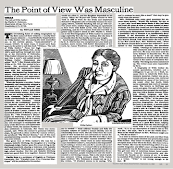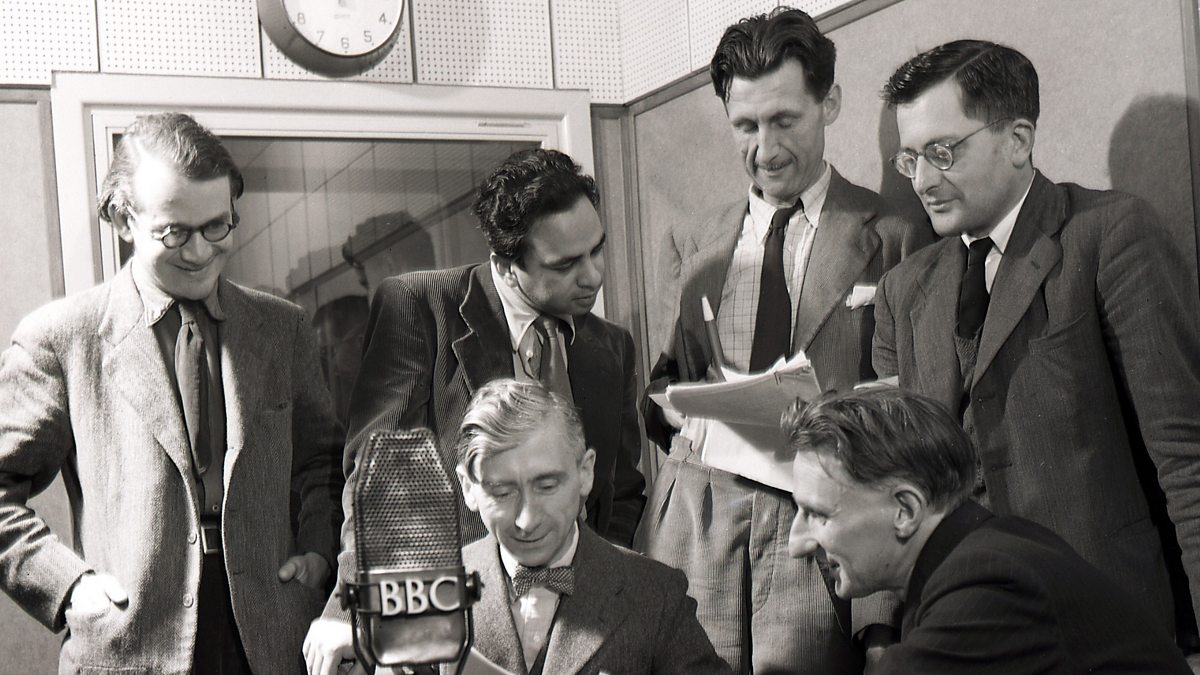Joan Didion
Joan Didion (1934-2021) was an American essayist, journalist, novelist, memoirist, and screenwriter. She is noted for her unique prose on the cultural and political environment of the 1960s. Born December 5th, 1934 in Sacramento, California to Frank and Eudene Didion, Didion was born a writer. She didn't recall staying in school consistently until about fourth grade. Despite her education being unconventional, as her father had to consistently relocate as he was an officer in the Army Air Corps, she remembers writing for as long as she could remember.
In a 2006 interview with the Academy of Achievement, Didion was asked about her experience as a writer, to which she stated she saw herself as a writer when she was about five, simply because she started to write things down.
With this, she taught herself to read and write another journalist turned novelist, Ernest Hemingway.
"I liked Hemingway," Didion began. "The thing about Hemingway's sentences is that they are really loaded. Every comma and absence of a comma makes a huge difference, and it’s really been deliberated."
After graduation, she attended the University of California, Berkeley, where she received a Bachelor of Arts in English in 1956. During her senior year, she won a contest sponsored by Vogue called the "Prix de Paris," an annual essay contest that was held to help sponsor job opportunities with Vogue. Didion won the contest by submitting an essay about architect William Wilson Wurster, earning herself a job as a research assistant at Vogue.For the first year, all she did was read old issues. Alongside this, she was also writing pieces for other magazines, but the goal in mind was to write a novel.
Using the skills she learned during her seven years at Vogue, Didion published her first novel, Run, River, telling a story of a haunting marriage that falls apart. However, her first nonfiction novel, Slouching Towards Bethlehem, is considered Didion's best work as an example of journalism, more specifically, "New Journalism."
Slouching Towards Bethlehem is a collection of columns that she had originally posted as an assignment for the magazine The Saturday Evening Post. In these essays, Didion narrates her "internal and external worlds at a singular time in modern American history." Set in the late 1960's, these twenty essays address the political and cultural environment of California in her life.
"New Journalism" is best defined as a technique in reporting in the 1960s and 70s that broke away from the traditional, objective style of reporting and instead relied on literary techniques and a personalized approach. In Slouching Towards Bethlehem, she uses her own pieces with a personal voice to explore complex, societal issues in California, moving beyond traditional journalistic objectivity and instead immersing the reader in the story's world.
Along with Slouching Towards Bethlehem, some other novels of Didion highlight her journalistic abilities and "New Journalism" techniques, including Salvador, Miami, Political Fictions, Where I Was From, and The White Album.
Of these books, I have only read The White Album. From a journalistic standpoint, this book was beautiful. She was involved in the political culture of California at such an interesting period, from Georgia O'Keefe to politicians in California. To me, some of these essays felt a bit redundant, as if you had to be there to understand, leaving them to feel almost irrelevant now. Nonetheless, they are still interesting reads and highlights of Didion's sharp, unique prose.
Ernest Hemingway
Hemingway (1899-1961) was a short story writer, novelist, and journalist born in Oak Park, Illinois. Born to physician Clarence and well-known local musician Grace Hemingway, Hemingway was surrounded by intellect and art.
His mother taught him the cello, and he credited these lessons with contributing to his writing style. His father taught him woodcraft, fishing, and hunting, contributing to his life-long passion for nature.
In high school, he was involved in the arts (choir) and sports (boxing, football, track and field, and water polo). But the thing that people know him for is his writing, which started during his junior year of high school.
He was an editor of the school newspaper,
The Trapeze, and the school yearbook,
The Tabula, jumpstarting his career as a reporter for
The Kansas City Star at just eighteen years old
. He started off writing obituaries, editing, and gathering crime news.
During his journalism career, he was also a correspondent for the
Toronto Star and a contributor to
Esquire, Star Weekly, Look, True, and
Colliers.
T. Norman Williams, a writer who trained Hemingway at The Kansas City Star, wrote about Hemingway, stating "You see things. You know things. You read people like a book. And above all you can tell it."
 |
A snippet of "Kerensky, the
Fighting Flea"
|
Two months after he started, he had his first feature story published. "
Kerensky, the Fighting Flea" was a piece about
Leo Kobreen, a successful amateur boxer, combined with Hemingway's love for boxing with humanity.
In 1967, journalist, educator, and writer William White edited a collection of Ernest Hemingway's articles that he wrote between 1920 through 1956 entitled
By Line: Ernest Hemingway. From his eyewitness accounts of the
Spanish Civil War (1936-1939) to his essays on hunting, this book showcases Hemingway's unique style, personality, and intelligence.
Along with this, Hemingway went on to publish stories of his own, including
In Our Time,
The Sun Also Rises, and
Pulitzer and Nobel Prize winning novel
The Old Man and the Sea. Common themes within his book include the effects of war, human endurance, and nature.
Hemingway's economic and philosophical prose was one that not only influenced countless writers (like Didion), but readers and audiences around the globe.
Willa Cather
Willa Cather (1873-1947) was a
novelist and journalist best known for her depictions of immigration in America in the early 20th century and her literary criticism for various publications.
Cather was born in Winchester, Virginia before moving to
Red Cloud, Nebraska at nine years old after a tuberculosis outbreak; this is where her journalism career would take off.
She enrolled at the University of Nebraska-Lincoln in 1890. There, she wrote an
essay on
Thomas Carlyle, a Scottish essayist, historian, and philosopher who was a leading writer of the Victorian era. This essay was published by her professor, Ebenezer Hunt, without her knowledge to the
Nebraska State Journal.
Before she began her career in Pittsburgh, Cather began editing the women-owned family magazine
Home Monthly. In her short time at the magazine, before it sold, she produced journalistic and literary pieces.
But this magazine being sold couldn't keep her from Pittsburgh.
Between 1904 and 1905, Cather taught at Allegheny High School and continued to write by freelancing. After her teaching career, she moved to New York and joined the McClure's Magazine team as managing editor.
Cather's work often puts readers in the story, allowing us to get a sense of not only the landscape but the feeling.
Eric Arthur Blair | George Orwell
Eric Arthur Blair (1903-1946), who used the pen name George Orwell, was a novelist, critic, journalist, and essayist best known for his novel Nineteen Eighty-Four and his totalitarianism critique Animal Farm.
His family could not afford him to go to a public school, so he was sent to a Catholic convent school. In 1911, he gained a scholarship to
St. Cyprian's school in East Sussex where he remained there for five years, publishing
poems in
Henley and South Oxfordshire Standard. Blair then won a King's Scholarship to attend Eton College where he studied under
Aldous Huxley.
While in college, Blair helped produce college magazine The Election Times, which was also joined in publication with College Days and Bubble and Squeak.
 |
| Blair in Burma |
After his leave to England, he decided not to return to Burma and quickly used this experience to shape his character as a writer. He spent a period of his life in London and Paris to immerse himself in the experience Burmese people faced, living in cheap lodging houses. With what he witnessed in Burma and what he lived in London and Paris, he wrote
Down and Out in Paris and London, where the experience was written as fiction.
In 1937, Blair spent his time reporting on the
Civil War in Spain with the Republican militia. After facing a life-threatening injury, Blair was forced to flee, writing of his experience in
Homage to Catalonia.
While at BBC, Blair introduced
Voice, a literary program for his listeners in India.
In 1941, he wrote articles for the American magazine
Partisan Review. Other journalistic endeavors included contributing to
The Observer, editing for the
Horizon, and working as a
war correspondent for
The Manchester Evening News.
After resigning from BBC in 1943, he published
Animal Farm a year later, a political story based on Joseph Stalin and the Russian Revolution. This novel is regarded as one of his finest works as it tackled themes of dictatorship, equality- and lack thereof- and corruption.
Nineteen Eighty-Four is known as one of his most famous novels, warning about Big Brother, honesty in government, and totalitarianism. Many of the phrases within this book left a notably deep impression on readers, politicians, and people around the globe, coining phrases that became common phrases in political rhetoric such as "
doublethink" and "
newspeak."
Other novels by Orwell include Coming Up For Air, The Road to Wigan Pier, A Clergyman's Daughter, and Keep the Aspidistra Flying.
━━━━⊱⋆⊰━━━━
Each of these famous journalists turned novelists made an impact in both fields, leveraging journalistic skills like observation and storytelling while also offering the freedom to explore deeper themes and utilize unique literary tools.








































.jpg)
.png)

